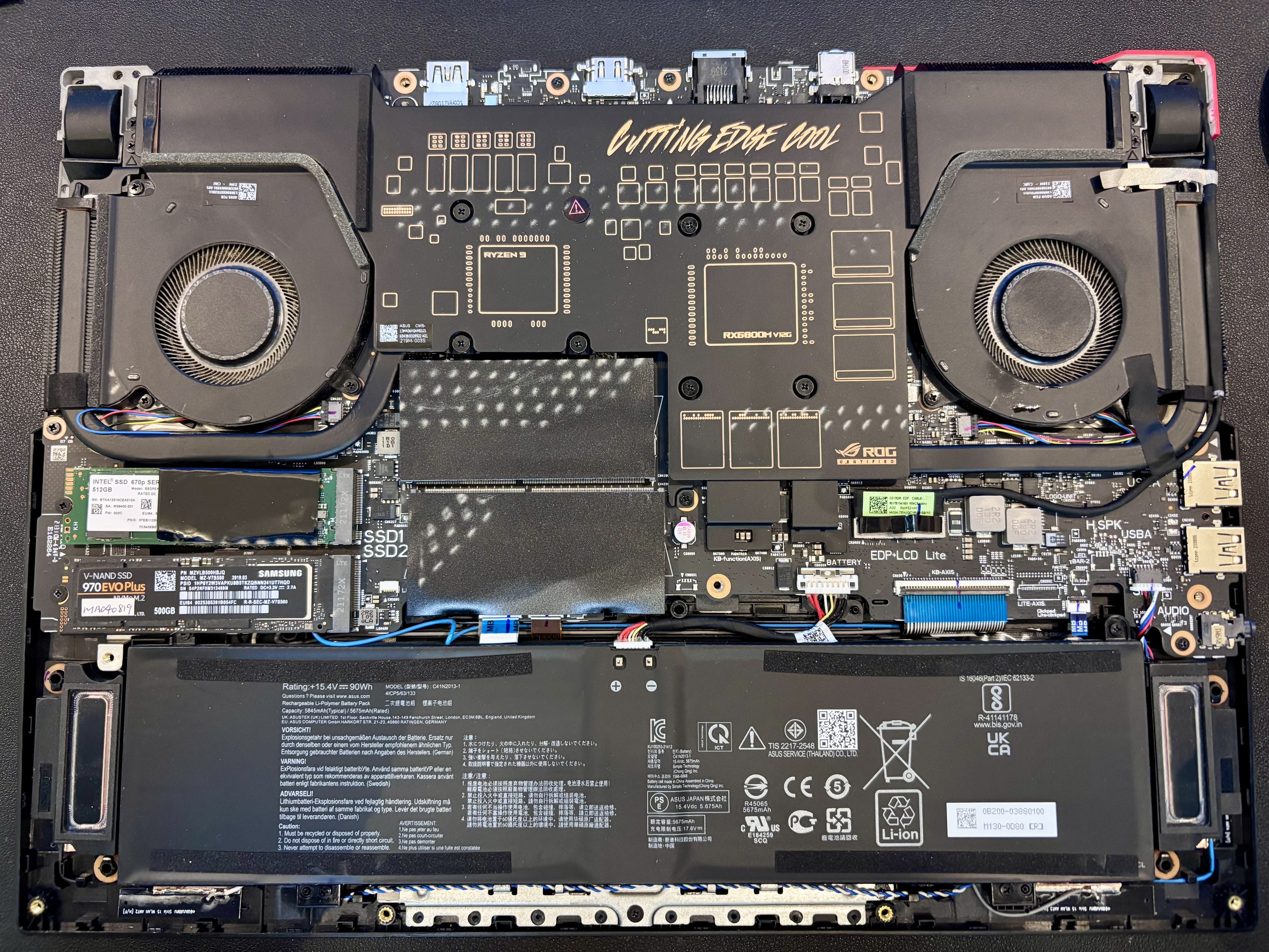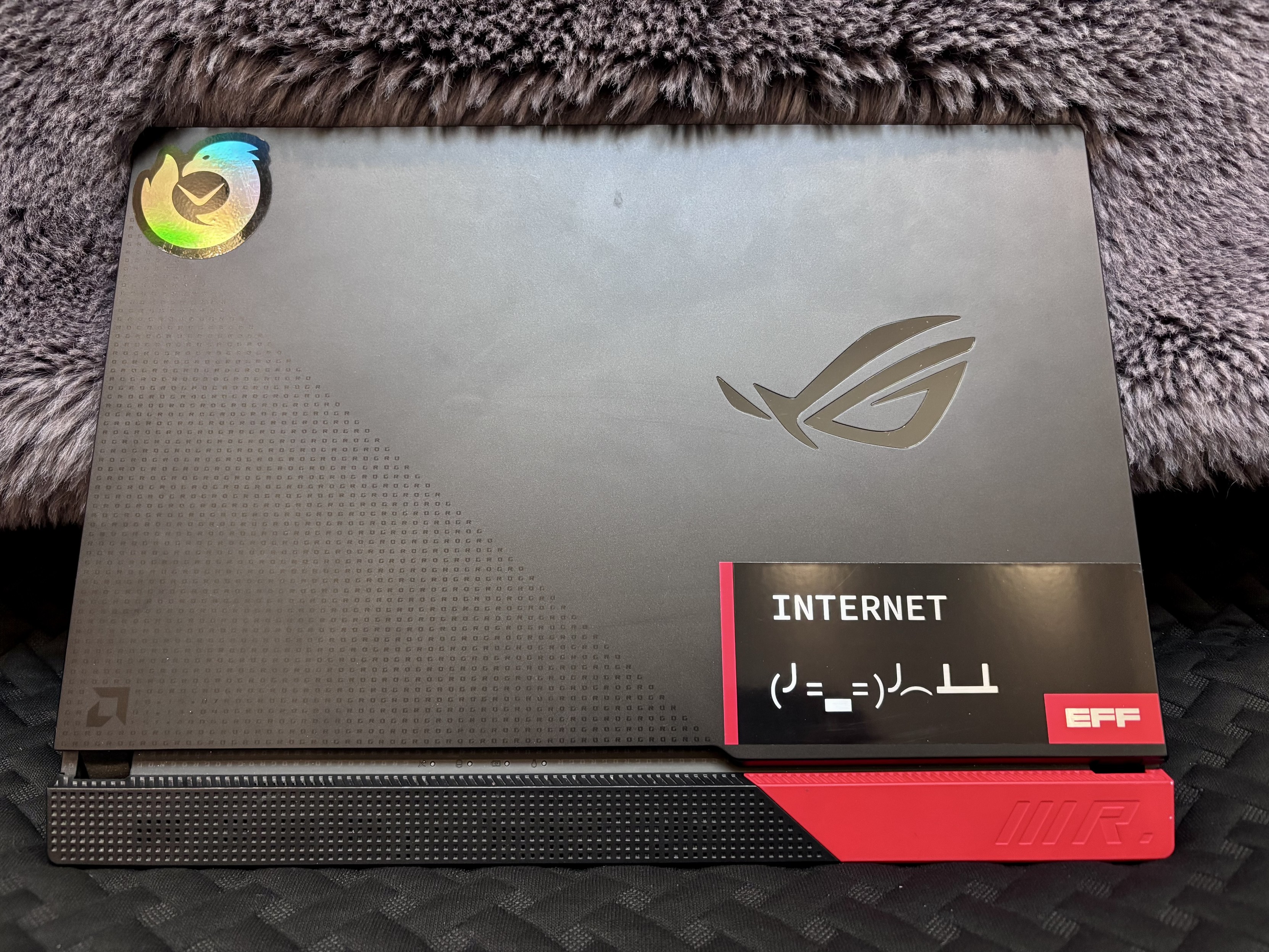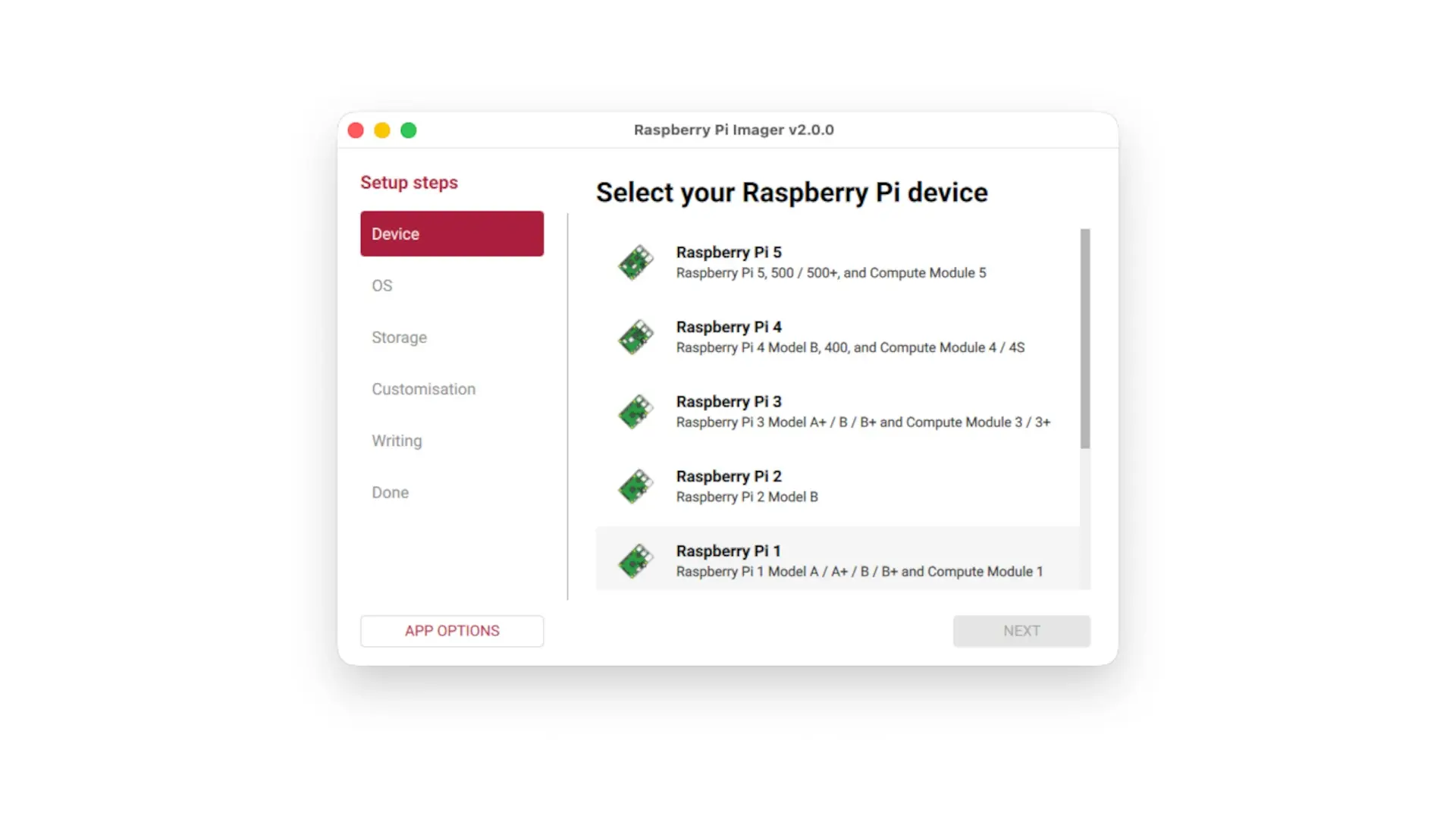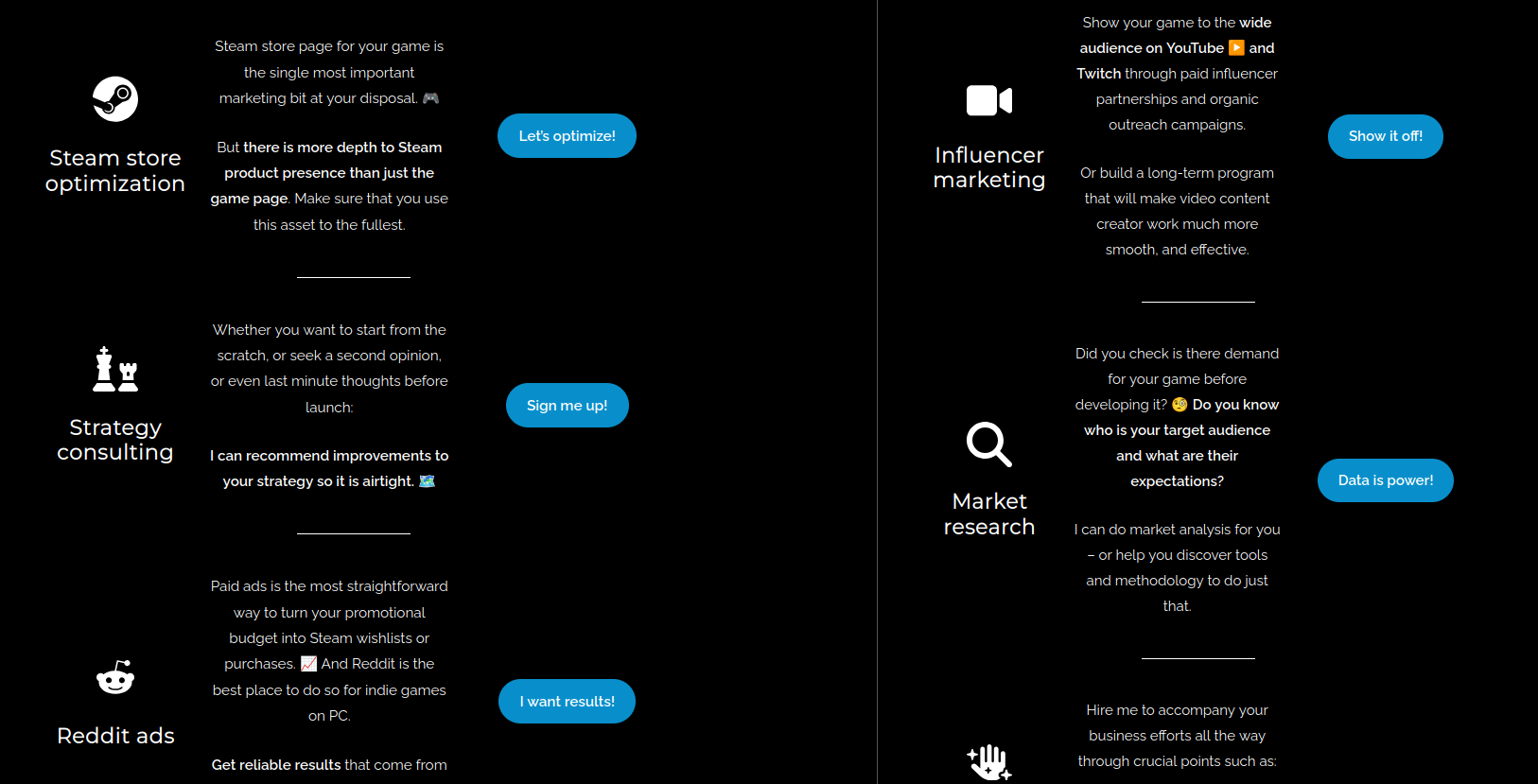Search results for tag #linux
#hashtags for exposure:
#windows #MacOS #Linux #BSD #FreeBSD #OpenBSD #NetBSD #Haiku #HaikuOS #BeOS #Amiga #Workbench #AROS #TempleOS #Boost #BoostsAppreciated #BoostPlease #PleaseBoost
Ok, sorry for all that. 😂
Sektori is absolutely one of the best modern twin-stick shooters https://www.gamingonlinux.com/2025/11/sektori-is-absolutely-one-of-the-best-modern-twin-stick-shooters/
@CatherineBabault If you feel you have to replace your Windows 10 PC for Christmas as it cannot run Windows 11 try to find a Repair Cafe to help you install Linux.
It can save you money and stop you putting more money in the hands of the corporations. It will also save a perfectly usable computer from being sent to the tip.
My remaining elderly parent, soon to turn 87 has been using Linux for over ten years now.
Linux might work for you too.
https://www.ifixit.com/Wiki/How_to_Find_your_Local_Repair_Caf%C3%A9_%F0%9F%8C%8E
KDE Plasma going all-in on Wayland and will drop the X11 session completely https://www.gamingonlinux.com/2025/11/kde-plasma-going-all-in-on-wayland-and-will-drop-the-x11-session-completely/
 boosted
boostedGamers Nexus:
"Just ran the numbers and, by time cost for the team (counting mine at $0), we're at over $10K of time for setup, prep, research, discussion with developers, and testing for this. Wow! It's well worth it though and hopefully this sets a foundation for us to do more of this going forward, especially given the true cost of using Windows. "
Build your own Capcom All-Stars Bundle and save with Fanatical https://www.gamingonlinux.com/2025/11/build-your-own-capcom-all-stars-bundle-and-save-with-fanatical/
Slimbook launch the KDE Slimbook VII with AMD Ryzen AI 9 365 / Radeon 880M https://www.gamingonlinux.com/2025/11/slimbook-launch-the-kdeslimbookvii-with-amd-ryzen-ai-9-365-radeon-880m/
Fedora proposal put forward to improve "production stability and incident management" https://www.gamingonlinux.com/2025/11/fedora-proposal-put-forward-to-improve-production-stability-and-incident-management/
Has anyone ever heard of a phono jack connection detection that works in windows with headphones and a sound system, but only works in linux in the headphones?
This issue breaks my understanding of how phono detection works. How the operating system would have any way to distinguish between the two. And it sounds like some physical weirdness.
Anyone else seen anything like this? Please boost.
Does anyone have a remote desktop solution for #Linux and #Wayland that actually works?
#RustDesk disconnects after about 10 seconds, and #DWService gives me a garbled screen.
This is attempting to connect to a Fedora 43 Plasma laptop. Trying to support a family member that's clear across the country, RIP me lol.
No, I can't just use VNC/RDP and tailscale. If I had thought of it when I was setting it up, that would've been great. XD
Any ideas, #HiveMind?
P.S. I might try "Rabbit Remote Control" next chance I get.
https://github.com/KangLin/RabbitRemoteControl
@ajlewis2 @stefano Microsoft's anti-Linux #FUD was probably the #best #marketing and #advertising and #promotion for #Linux.
At the time, if memory serves correctly, Windows XP/2003 were the current OSes then. It wasn't like they were stable or secure. MS poured millions into those ads. 😂
Two Point Museum: Zooseum DLC is the biggest yet launching December 2 with a free update out now https://www.gamingonlinux.com/2025/11/two-point-museum-zooseum-dlc-is-the-biggest-yet-launching-december-2-with-a-free-update-out-now/
> I'm not paid enough for the torture of having my work broken and invalidated every few months. You can build and install an X window manager from 1989 btw.
I wish more people would understand this.
The Linux "folks" (whoever they actually are) play patty-cake with constantly changing APIs and standards, and users are bewildered that other projects are falling behind.
This model of governance (for lack of a better word) leaves much to be desired.
Voivod: The Nuclear Warrior shows off a new prototype trailer of the heavy metal platformer https://www.gamingonlinux.com/2025/11/voivod-the-nuclear-warrior-shows-off-a-new-prototype-trailer-of-the-heavy-metal-platformer/
You can get 18 different stories in the Assemble Entertainment Humble Bundle https://www.gamingonlinux.com/2025/11/you-can-get-18-different-stories-in-the-assemble-entertainment-humble-bundle/
@stefano The *perception* that #Linux is anti- #Windows or #MacOS was understandable back in the day when Steve Ballmer was running the show and #Microsoft pumped out no shortage of anti-Linux FUD and propaganda.
It's also important to note at that time the OS landscape was very different.
xorg-server 21.1.21 freshly released to fix some annoying regressions https://www.gamingonlinux.com/2025/11/xorg-server-21-1-21-freshly-released-to-fix-some-annoying-regressions/
I'm taking a chance on this LG monitor for the new #Linux workstation.
Curved? Check! HDR? Check! 180Hz? Check! 1440p? Check! Great specs for the price.
I've been using my 4K Samsung TV for pretty much everything, and that stops this week. I need to have a physical partition between "content consumption" and "content creation."
(Also, 4K is still too damn demanding - 1440p is the sweet spot!)
(Also also, please never buy a Samsung TV)
https://amzn.to/4acY8P7
^Disclosure: affiliate link
As I'm getting more and more into desktop #linux, I seem to be liking #gnome the most. However, I'm trying to shy away from Ubuntu for the reasons of snap, though I'm not experienced enough to know whether snap is "just fine" for me or I should avoid it.
The other toggle point is the use of the dock. I like the persistent dock, but trying to get used to vanilla Fedora Workstation at the moment, sans dock.
What are you running for #desktop?
#fedora #ubuntu #boost #recommendations
| Fedora Workstatation (no dock): | 32 |
| Fedora Workstation (dash to dock, etc): | 17 |
| Ubuntu (gnome): | 22 |
| Some other gnome (please comment): | 20 |
Closed
I just realized that Hetzner does not treat #FreeBSD as a first-class OS, offering only #Linux distributions for its VPS products. Can anyone recommend a good hoster for a small (experimental) FreeBSD instance?
Edit: Thanks to everyone pointing out that it is possible to install FreeBSD on a Hetzner VPS. I would like to support a native FreeBSD hoster.
Ubuntu get 15 years of support, Google finally releases Android source code and backs down on “sideloading”, more steps to move on from X11, IKEA launches a range of Matter IoS gear, and more.
Get a nice discount on the Steam Deck LCD during Valve's Black Friday sale https://www.gamingonlinux.com/2025/11/get-a-nice-discount-on-the-steam-deck-lcd-during-valves-black-friday-sale/
Schrodinger's Cat Burglar is an adorable looking puzzle game https://www.gamingonlinux.com/2025/11/schrodingers-cat-burglar-is-an-adorable-looking-puzzle-game/
This is a beautiful machine. A bartop arcade cabinet with a wood look running Linux Mint.
Looks like it was built in the 70's or 80's.
https://hackaday.io/project/202861-bartop-arcade-cabinet-from-scrap-and-e-waste
Igalia detail their open source work for Valve's Steam Frame and Steam Machine https://www.gamingonlinux.com/2025/11/igalia-detail-their-open-source-work-for-valves-steam-frame-and-steam-machine/
#RaspberryPi Imager 2.0 Released with Revamped UI, Device Detection, and Much More https://9to5linux.com/raspberry-pi-imager-2-0-released-with-revamped-ui-and-device-detection
Hello I am Janek! 💙
What I do is all kinds of #indiegame marketing and promotion for small/medium #indiedev studios or publishers. 🕹️
My hobbies and special interests include #Linuxgaming and cats! 🐱
In fact it was #Linux gaming expertise that landed me my first gaming industry job at GOG. com back in 2014. 🐧
Looking forward to finding even more new friends or connections here! 🏳️🌈
Blending classic survival games with automation - ORMOD: Directive sounds interesting https://www.gamingonlinux.com/2025/11/blending-classic-survival-games-with-automation-ormod-directive-sounds-interesting/
WinBoat adds support for Podman, UWP, app filtering and more https://www.gamingonlinux.com/2025/11/winboat-adds-support-for-podman-uwp-app-filtering-and-more/
@gamingonlinux @anthropy @fedora
"Those reports probably come from a system that was configured in a weird and esoteric way, probably doesn't impact 'real users', we don't need to fix those. 🧐 "
🤣 #linux
(Just to be sure, this is meant as friendly banter, because I think it's ironic.)
@lzg yes you are right #simpletech is the best tech, that is why a #UNIX philosophy is that if something can be simplified, it should be done.
Ok 1 button mouse was not a good idea XD
cars have been made complicated on purpose (more money with spareparts)
Show me something more simple that #mate #gnu #linux #debian #desktop an the best: unlike your #windows #desktop (puke) it barely changes over time :D
But please yes have fun with windows 193737828
![[?]](https://polymaths.social/fileserver/01HCMX6M1CZNEVJ4F5H58TT5XJ/attachment/original/01JHC5KM5K0V0J0436SPD3F86H.jpeg)


 🍵
🍵 





















